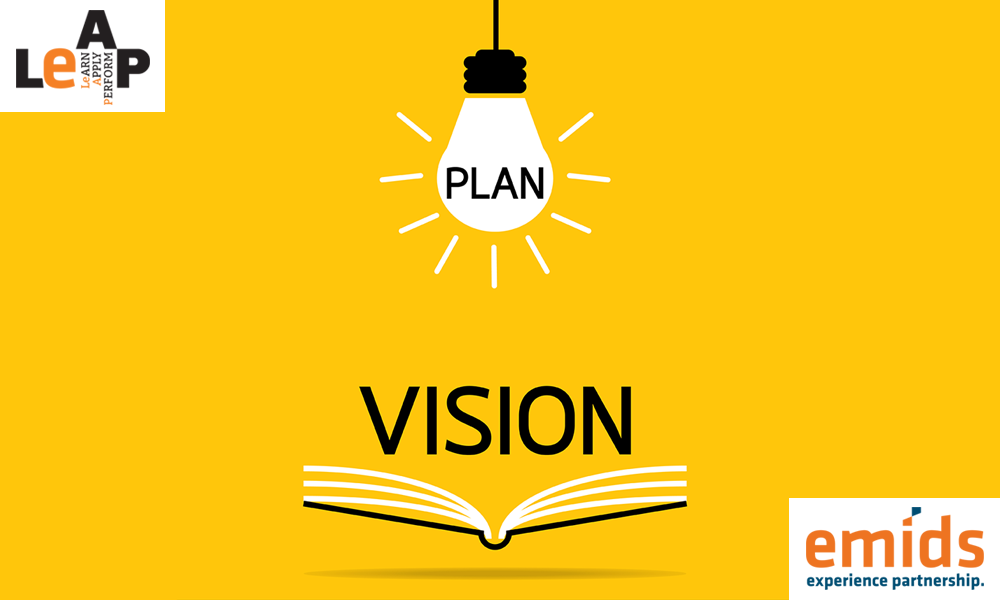Visions for organizations often stem from cherished dreams of making a lasting impact in the world. As heady they may be, what makes them special is the action taken on them, and what is done to bridge the current reality with the ideal state. Today, we bring to you some practices to inspire action on your organization’s vision.
Sometimes, the challenge in taking action on a lucrative vision, is that some people don’t see the bigger picture. Though the devil does lie in the details, they lose sight of what the mini-steps are adding up to. It’s like putting together a jigsaw puzzle, without knowing what the end result needs to look like. And this is where the approach of working backwards comes in handy. Just like we’d first examine the whole picture of a jigsaw puzzle, a crucial first step is to dive into the final impact of the vision. Would you want your team to build three apps because that was a part of their monthly goals? Or would you rather your team keenly focused on how those three apps they build, make global healthcare services simpler and more engaging?
A great way to ensure you have the bigger impact in focus, right from the word go, is to set BHAGs (pronounced as Bee-HAGs) – Big Hairy Audacious Goals. In the business bestseller Built to Last: Successful Habits of Visionary Companies, Jim Collins and Jerry Porras asses that most enduring great companies set and pursue BHAGs, whose key components are:
- Breaking down the vision into long time frames, like 5 or 10 year plans
- Making them clear and easy to grasp
- Connecting all goals to the values and purpose of the organization
Collins also posed an inquisitive method to go about setting BHAGs, through three key questions:
- What are you deeply passionate about?
- What drives your economic engine?
- How can you be the best in the world, at what you do?
Wondering what is a good example for BHAGs? A telling one that pops up for us is when NASA decided to send a human being to the moon! That was audacious alright, and the first step NASA took was to bring together a great team, who owned different aspects of this mission, like research, infrastructure, funding, prototypes, etc. They sent Apollo 8 to test how a manmade machine would fare there. Finally, Apollo 11 was sent, with Neil Armstrong in it, and the rest is history!
A word of caution here, is not to let your people get intimidated and demotivated by the bigger vision. We don’t want your team to think that it is unattainable. Psychologist Karl Weick argued that people often become overwhelmed when faced with massive problems. He rallied for reframing larger problems into smaller, attainable challenges that produce visible results. Just like NASA went about breaking down their BHAG. Often, ‘small wins’ generate more action and complete solutions to major problems, because they enable people to make slow, steady progress. And that’s what we want. Steady progress. This is where all the mini-steps come in handy.
Use the following tool to help your team formulate how to get to the bigger picture.
SMART goals. Prompt your team to design goals using the following metric.
- Specific: Start by asking what the desired outcome is, and refine it till the goal is simple.
- Measurable: How will they know they have achieved a goal? This is to determine milestones.
- Attainable: Make the simple goals realistic. Use this to dial down the overwhelm of the larger vision.
- Relevant: How do the goals reflect the organization values and vision?
- Time-bound goals: By when will the goal be completed?
What will help make your team’s SMART goals more molecular? Using different time frames in the SMART format. They can be designed for annual goals, monthly as well as weekly one. And the daily to-do list takes the cake!
If ever you feel like you are losing energy around the progress, recall Van Gogh’s words: “Great things are done by a series of small things brought together.” Just keep putting one foot in front of the other.








